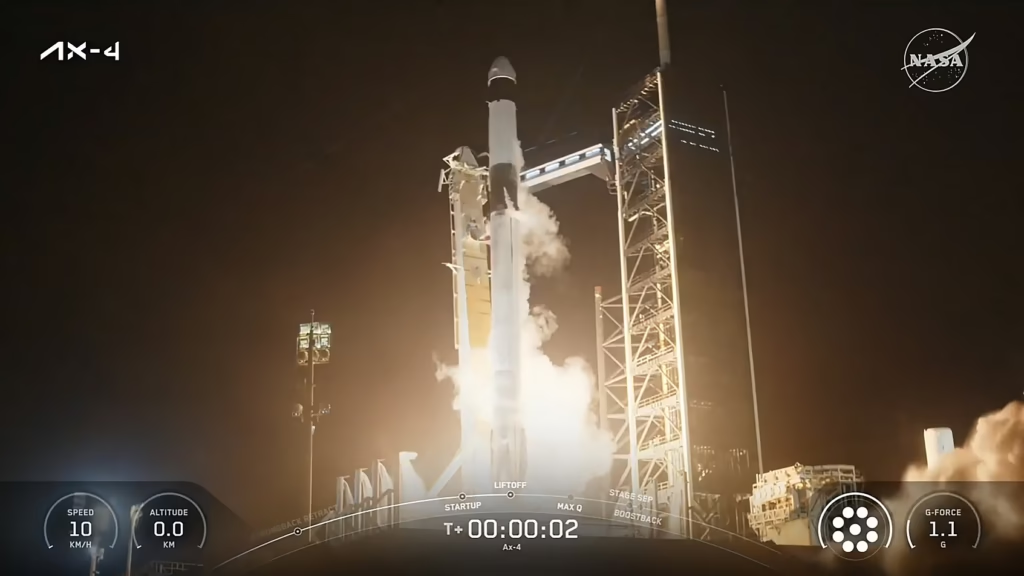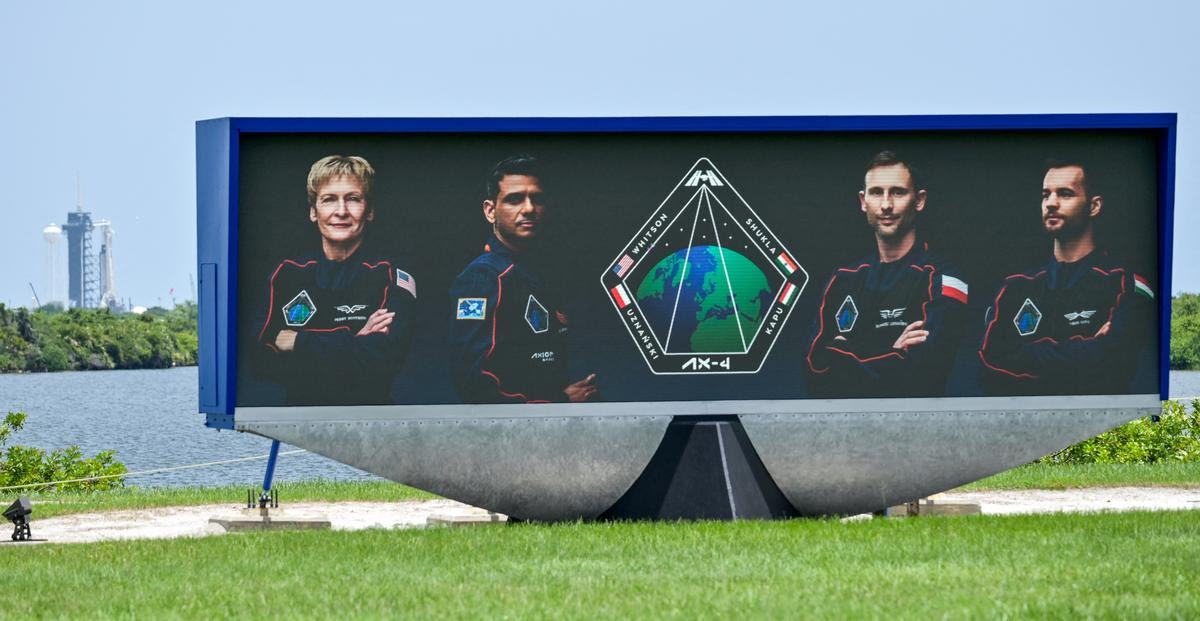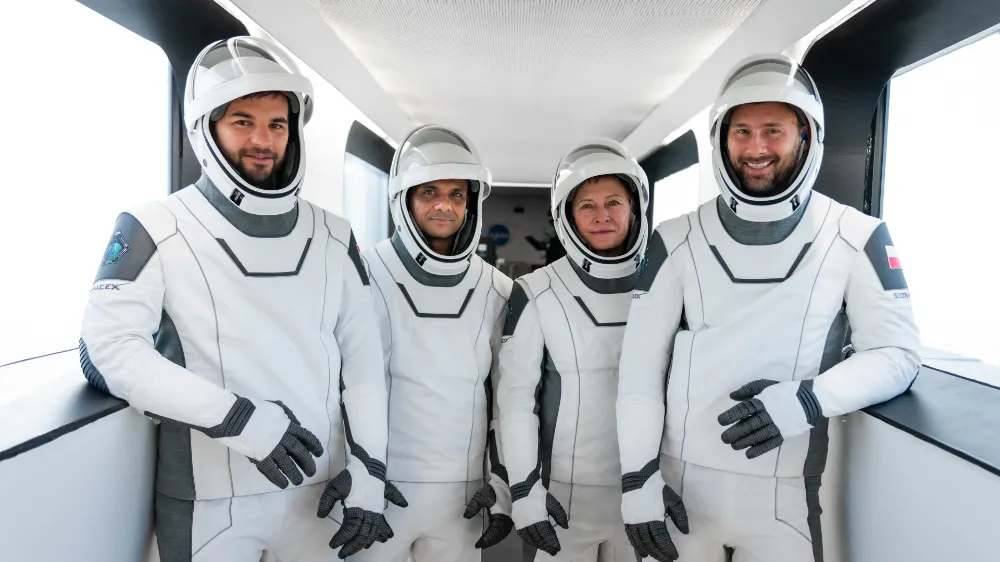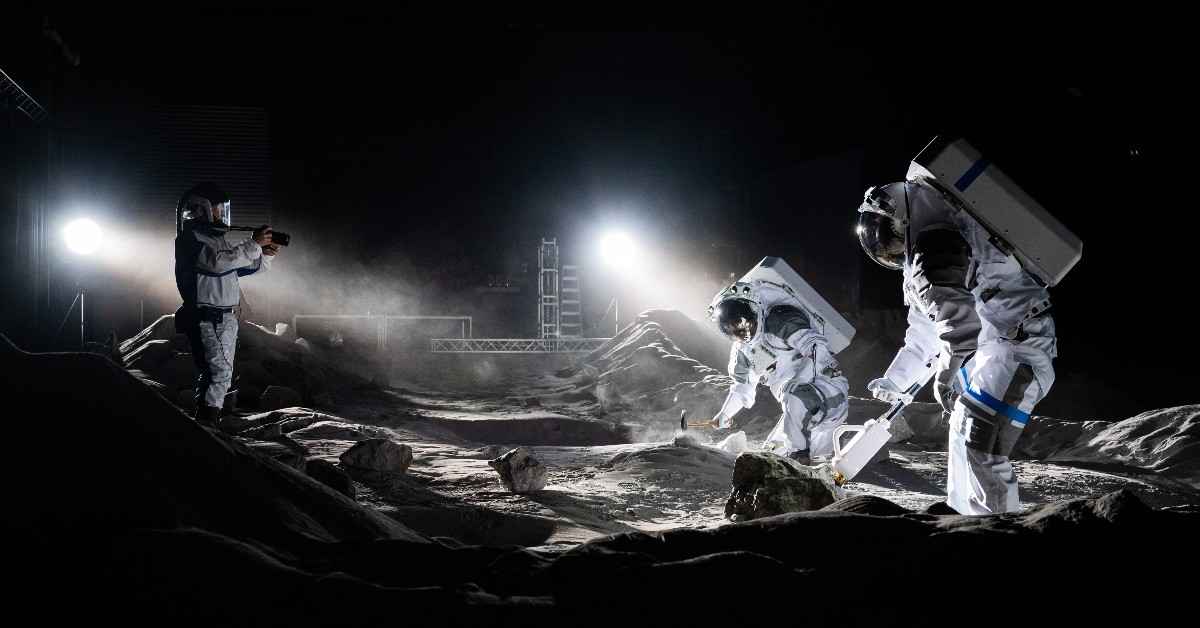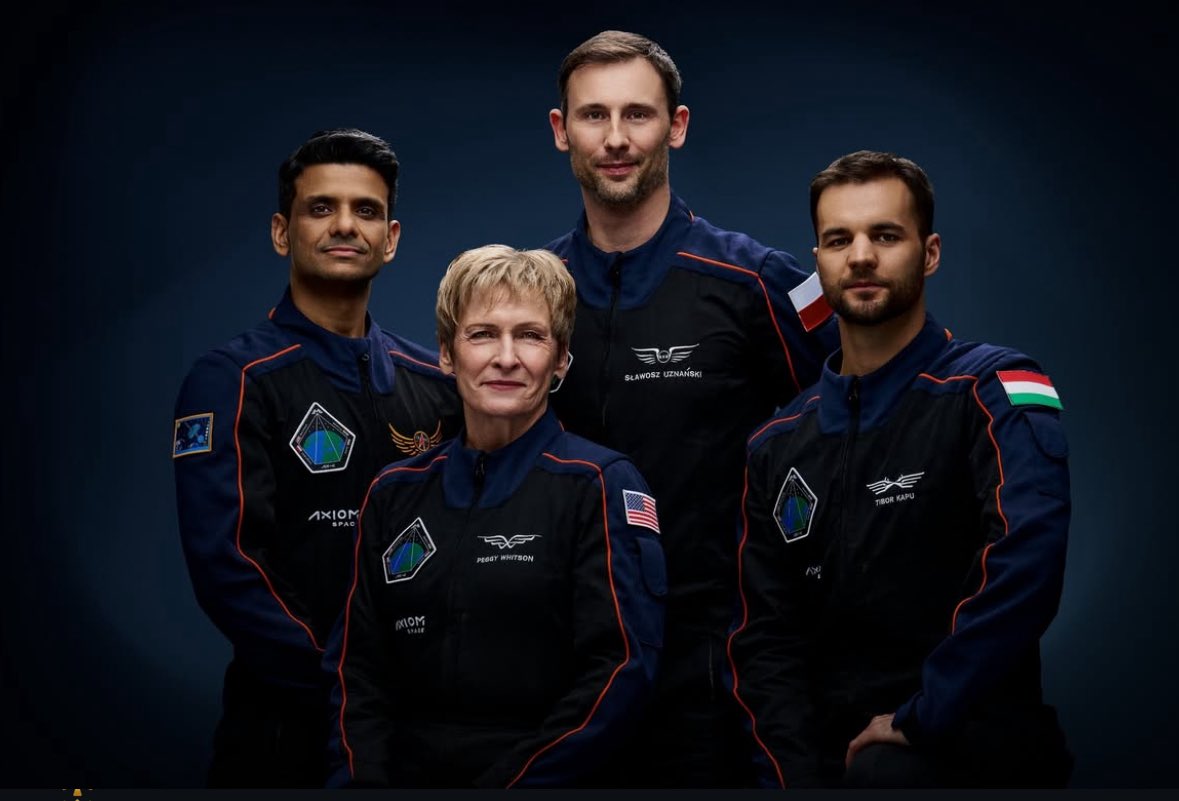The Daily Schedule Of Axiom-4 Mission Crew is conducted by Axiom Space in collaboration with SpaceX, NASA, and international space agencies, represents a new era of private human space exploration. Onboard the mission is Shubhanshu Shukla, one of the first private astronauts from India. This mission focuses on scientific research, education, and international cooperation aboard the International Space Station (ISS). The crew’s schedule is carefully planned to maximize productivity while ensuring their health and safety in the challenging environment of microgravity.
Below is a detailed account of a typical day in the life of the Axiom-4 crew during their stay aboard the ISS.
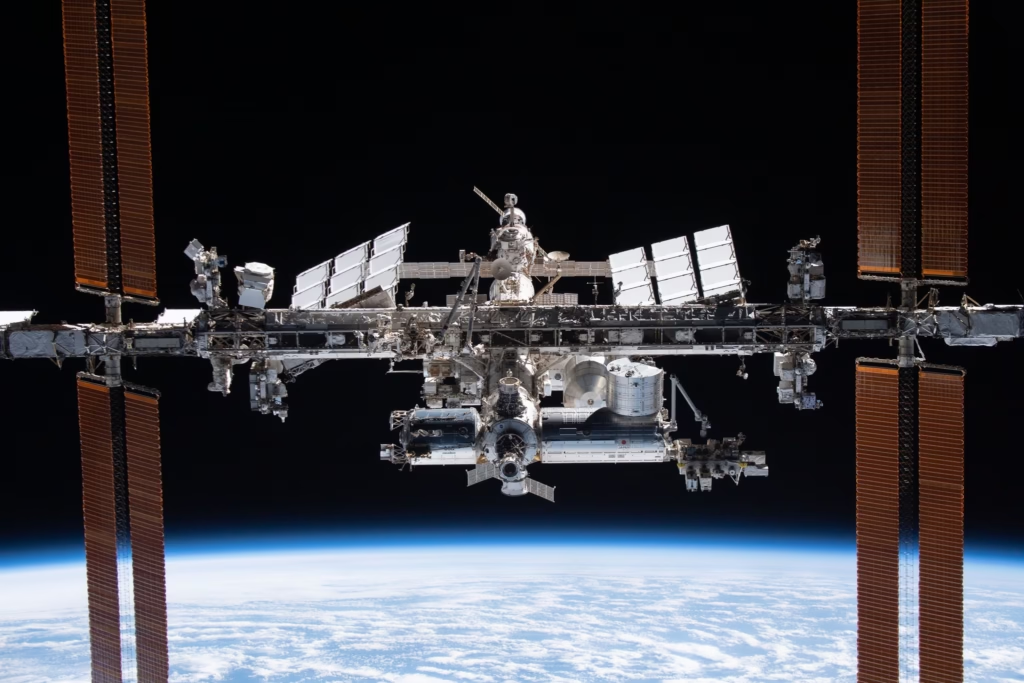
Daily Schedule Of Axiom-4 Mission Crew
1. Wake-Up and Morning Preparations
- Time Frame: 06:00–06:30 UTC
The crew’s day begins with a wake-up signal, often customized with music or greetings from family and mission control. Astronauts have about 30 minutes to attend to personal hygiene, including brushing their teeth, washing up, and dressing in their comfortable, station-approved attire. This time is also used to hydrate and prepare for the day ahead.
Morning routines include quick health checks such as monitoring heart rate, body temperature, and hydration levels. These self-checks are essential for tracking the effects of microgravity on the human body and ensuring the astronauts are fit for their activities.
2. Daily Planning Conference
- Time Frame: 06:30–07:00 UTC
Each morning, the crew participates in a Daily Planning Conference (DPC) with mission control teams located in Houston (NASA), Moscow (Roscosmos), and other partner agencies such as ESA and JAXA. During this meeting, the astronauts review the day’s schedule, discuss ongoing experiments, and address any operational updates. Ground teams provide guidance and answer crew questions, ensuring seamless coordination between Earth and space.
Shubhanshu Shukla often uses this time to ask specific questions about his assigned experiments, technical tasks, or outreach responsibilities.
3. Scientific Research and Experimentation
- Time Frame: 07:00–12:00 UTC
The bulk of the morning is dedicated to conducting scientific experiments. The Axiom-4 mission includes a diverse range of research projects, many of which are tailored to leverage the unique conditions of microgravity. Key research areas include:
- Biological Studies: Investigating how microgravity affects human cells, tissues, and microbial life, with applications for healthcare on Earth.
- Material Science: Testing the behavior of fluids, metals, and polymers in microgravity, which can lead to innovations in industrial processes.
- Space Medicine: Monitoring physiological changes in the astronauts to study the long-term effects of space travel on the human body.
- Earth Observation: Using specialized cameras and sensors to capture high-resolution images of Earth’s surface for climate studies.
Shubhanshu Shukla is involved in several high-priority experiments, including studies related to fluid dynamics and space biology. He also collaborates with international teams to document these experiments for educational outreach.
4. Midday Break and Lunch
- Time Frame: 12:00–13:00 UTC
After a busy morning, the crew enjoys a one-hour break for lunch. Meals aboard the ISS are pre-packaged and specifically designed to be nutritious and easy to consume in microgravity. Options include rehydratable soups, vacuum-sealed entrées, and freeze-dried fruits.
The midday break also serves as a chance for relaxation and informal communication with family or mission control. Astronauts often take this time to look out of the station’s windows, marveling at Earth from 400 kilometers above its surface.
5. Maintenance and Outreach Activities
- Time Frame: 13:00–16:00 UTC
The afternoon is a mix of maintenance tasks and public engagement activities.
- Station Maintenance:
Astronauts perform routine checks on the ISS’s systems, including air filtration, power management, and data transmission systems. They may also assist in minor repairs or calibration of onboard equipment. - Outreach Programs:
Public engagement is a key aspect of the Axiom-4 mission. Shubhanshu Shukla participates in live Q&A sessions with students, records educational videos about space science, and collaborates with his fellow crew members to inspire future generations. These activities aim to bridge the gap between space exploration and public understanding.
6. Physical Exercise
- Time Frame: 16:00–17:30 UTC
Exercise is a mandatory part of every astronaut’s daily schedule to mitigate the adverse effects of prolonged weightlessness, such as muscle atrophy and bone density loss.
- Equipment Used:
- Advanced Resistive Exercise Device (ARED): Simulates weightlifting for strength training.
- Treadmill with Harness: Allows astronauts to run while anchored to the treadmill.
- Cycling Ergometer: A stationary bicycle for cardiovascular fitness.
The crew tracks their performance and reports their progress to medical teams on Earth. For Shubhanshu Shukla, exercise also doubles as a way to maintain focus and energy levels during the mission.
7. Evening Wrap-Up and Dinner
- Time Frame: 17:30–19:00 UTC
The crew ends their workday with a wrap-up session, reviewing completed tasks and discussing plans for the next day with mission control. Dinner follows, providing a chance for the astronauts to relax and socialize. Meals are shared in the galley area, fostering camaraderie among the international team.
8. Leisure Time and Personal Activities
- Time Frame: 19:00–21:00 UTC
Astronauts are given free time in the evening to unwind and pursue personal interests. Activities may include:
- Watching movies or reading books stored on the ISS.
- Capturing photographs of Earth or celestial phenomena.
- Writing personal journals to document their experiences.
Shubhanshu Shukla often uses this time for reflective writing, drawing inspiration from the serene beauty of Earth and the vastness of space.
9. Sleep Period
- Time Frame: 21:00–06:00 UTC
Astronauts sleep in individual sleeping pods equipped with sleeping bags, ventilation systems, and communication panels. The ISS maintains a quiet environment with dimmed lighting to simulate nighttime and help regulate the crew’s circadian rhythms.
Quality sleep is crucial for maintaining cognitive and physical performance during the mission.
Weekly Highlights and Variations: Daily Schedule of Axiom-4 Mission Crew
While the schedule remains consistent, some variations occur:
- Emergency Drills: The crew practices responses to potential emergencies, such as cabin depressurization or fire.
- Cargo Operations: Assisting with the docking and unloading of resupply vehicles.
- Special Events: Celebrations for milestones or interactions with Earth-based audiences, such as conferences or televised events.
Daily Schedule Of Axiom-4 Mission Crew: Conclusion
The daily schedule of the Axiom-4 mission crew balances scientific achievement, personal well-being, and outreach responsibilities. For Shubhanshu Shukla, this mission is not just an opportunity to contribute to groundbreaking research but also a chance to inspire millions back on Earth. Through disciplined planning and collaborative effort, the Axiom-4 crew exemplifies the potential of human space exploration in the private sector.
This carefully designed routine ensures that every moment aboard the ISS is impactful, from advancing science to strengthening global connections.
FAQ: Daily Schedule of Axiom-4 Mission Crew
1. What time do the Axiom-4 astronauts wake up each day?
The crew typically wakes up around 06:00 UTC. This marks the beginning of their workday aboard the International Space Station (ISS). Wake-up routines include personal hygiene, a light meal, and a quick medical self-check.
2. How is the crew’s day structured?
Each day is structured into clearly defined blocks, including:
- Morning health routines and planning meetings
- Scientific research and experiments
- Meal and rest breaks
- Station maintenance and public outreach
- Physical exercise
- Evening debriefing, dinner, and personal time
- Sleep period
3. What kinds of experiments do they conduct?
During Daily Schedule Of Axiom-4 Mission Crew The Axiom-4 crew performs experiments in:
- Biology and medicine (e.g., cell growth, immune response)
- Materials science (e.g., fluid behavior in microgravity)
- Earth observation and remote sensing
- Technology demonstrations (e.g., robotics, sensors)
Shubhanshu Shukla is actively involved in projects that explore human physiology and conduct outreach-based science demonstrations for educational purposes.
4. What role does Shubhanshu Shukla play during the mission?
Shubhanshu Shukla serves as a mission specialist, participating in scientific experiments, educational outreach events, and international collaboration efforts. His role also includes contributing to video content for classrooms and interacting with students in live sessions from orbit.
5. When do the astronauts exercise, and why is it important?
During Daily Schedule Of Axiom-4 Mission Crew exercise daily, usually in the afternoon (between 16:00–17:30 UTC). Exercise is vital in space to prevent muscle atrophy and bone loss due to prolonged exposure to weightlessness. Equipment includes treadmills, resistance devices, and stationary bikes.
6. How do the astronauts maintain communication with Earth?
During Daily Schedule Of Axiom-4 Mission Crew stays in regular contact with Mission Control during scheduled planning and status meetings. They also use video calls and messages to stay in touch with family, media, and educational audiences.
7. What kind of food do they eat?
During Daily Schedule Of Axiom-4 Mission Crew meals include rehydratable soups, vacuum-packed main dishes, fruits, snacks, and drinks. Nutrition is carefully monitored to support health and performance. Lunch is typically taken around 12:00 UTC, and dinner in the early evening.
8. Do astronauts have any free time?
Yes. Each evening, the crew has approximately two hours of personal time for rest, reading, watching videos, photography, or journaling. Personal well-being is considered essential for mission success.
9. How long do they sleep?
Astronauts sleep for about 7–8 hours, starting around 21:00 UTC. They sleep in individual crew quarters equipped with sleeping bags, ventilation systems, and personal gear. Lighting on the ISS is dimmed during this time to simulate night.
10. Is the daily schedule the same every day?
The core structure remains consistent, but schedules vary slightly depending on:
- Experiment timelines
- Cargo vehicle operations
- Educational or media events
- Emergency drills or system maintenance
11. What types of outreach activities are included?
During Daily Schedule Of Axiom-4 Mission Crew includes outreach activities:
- Live video calls with students
- Science demonstrations for classrooms
- Messages and greetings for the public
- Cultural and international collaborations
Shubhanshu Shukla is particularly focused on outreach toward Indian students and schools, aiming to promote science education and inspire the next generation.
12. Do they have weekends off?
Astronauts do receive reduced workloads on weekends, which they often use for housekeeping, additional communication with family, and recovery. However, basic operations like exercise and system checks continue daily.
13. Who manages and monitors the schedule?
The During Daily Schedule Of Axiom-4 Mission Crew is planned and coordinated by Mission Control Centers in Houston, Moscow, and other international locations. Adjustments are made daily based on mission needs and crew input.
14. How long will the Axiom-4 crew follow this schedule?
The Axiom-4 mission is expected to last between 14 and 21 days. The daily routine remains largely consistent throughout the stay, ensuring stability and productivity in space.


